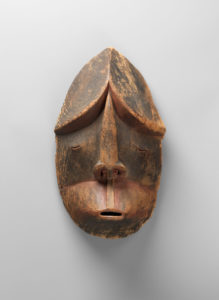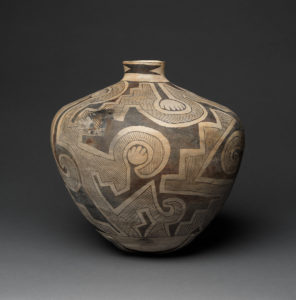
One of the Alutiiq masks from the Diker collection currently owned by the Metropolitan Museum of Art
New York’s Metropolitan Museum of Art has not had a good year. The Manhattan District Attorney’s office and third-party investigators have found that many works in their antiquities collection were previously stolen or looted from their places of origin. I wrote about this when a New York judge granted Manhattan DA a warrant to seize several ancient Roman artifacts looted from an archaeological site in Turkey in the 1960s. Furthermore, authorities found that several other artifacts had connections to the disgraced antiquities dealer Subhash Kapoor. And now, to compound upon the museum administration’s woes, ProPublica released a report on Tuesday, April 25th, concerning the troubling facts about the Met’s collection of indigenous American art.
Some of the more notable pieces in the Met’s Indigenous American art collection come from Charles and Valerie Diker. The Art of Native America exhibit is ongoing at the Met, the entire contents of which came from the Dikers’ collection. The Met relegates indigenous American, African, and Asian art to their own section of the museum that visitors often stumble into after passing through the Greco-Roman sculpture courtyard. However, the Art of Native America exhibition is situated in the more frequently-visited American Wing of the museum. ProPublica began researching the provenance of the Diker collection after Alaskan native Shyanne Beatty visited the Met in 2018. There, Beatty saw a pair of wooden masks made by Alaska’s Alutiiq people that had been stolen in the 1870s. However, the official provenance provided by the Met only starts in 2003, when the Dikers purchased them in California. Beatty was intimately familiar with these masks, as they had been one of the subjects of a documentary she worked on.
The Metropolitan Museum of Art owns one hundred thirty-nine indigenous American artworks that were once part of Charles and Valerie Diker’s collection. The couple has been loaning and donating works to the museum since 1993, and in 2017 they generously gifted ninety-one pieces from their collection to the Met. According to the ProPublica report, only 15% of these works have provenances that stand up to scrutiny, and some pieces have no provenance from before the Dikers purchased them. Of course, the Met is not the only American museum with substantial indigenous art collections. However, many of these museums, with less gallery space, fewer donors, and less prestigious reputations, ensure that when it comes to indigenous art, nearly all the pieces in their collections are thoroughly researched and have robust provenances. Some museums will refuse loans or donations if they lack provenance documentation.
Even though legislation has been on the books in the United States for thirty years that should prevent museums from acquiring and keeping stolen or looted indigenous artworks, stories like this still pop into the news cycle again and again. When the Met received the Dikers’ gift in 2017, the museum administration, as per the Native American Graves Protection and Repatriation Act of 1990, had six months to reach out to the tribes from which the pieces may have originated. That way, the tribal cultural officials would have the opportunity to notify the museum if a piece had been stolen or looted and educate museum specialists about the artifacts and whether or not it’s appropriate to display them in a museum setting. However, the Met often delays doing this. Regarding the Dikers’ 2017 gift, the Met did not notify the relevant government agencies until 2022. Additionally, a legal loophole in the 1990 law means that pieces loaned to a museum from a private collection are exempt from these requirements.
Because of the horrible treatment Indigenous American peoples have had to undergo due to official government policy and the actions of independent civilians, information about Indigenous cultural artifacts can be scarce, especially when they’ve been stolen or looted. The Manhattan District Attorney’s office can charge museum officials with criminal possession of stolen property. Still, charges are almost never filed since there’s always reasonable doubt about the museum’s culpability.
Even though many of these artifacts were stolen or looted decades or centuries ago, people tend to have very long memories when they have been wronged. Therefore, being accommodating to their requests can prove beneficial in several ways. The two Alutiiq masks at the Met were not the only masks that were stolen from Alaska. American and European settlers and explorers looted dozens of caves and burial sites, taking thousands of artifacts. One French looter donated dozens of indigenous artifacts, including many similar masks, to a museum near his home outside of Calais. Nearly a hundred years later, in 2008, the Alutiiq Museum in Kodiak, Alaska, collaborated with this French museum to send thirty-four masks to Alaska as a temporary loan. The exhibit that followed, as a result, had an immense impact. It not only served as a moment of healing for the local population but, according to the museum, local indigenous people are starting to relearn how to create these masks themselves, strengthening their connection to their ancestors and their culture. Repatriation can be a dirty word for some people, but this example shows its positive potential.

